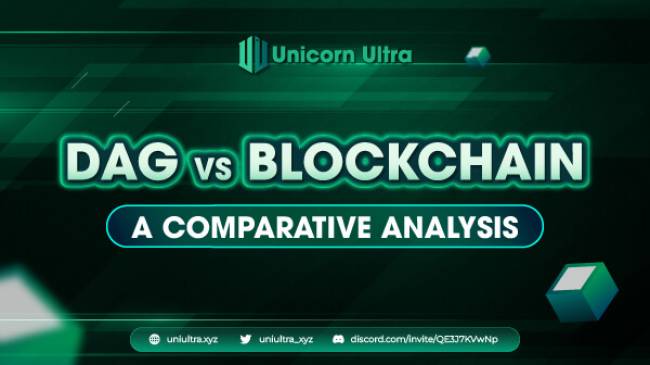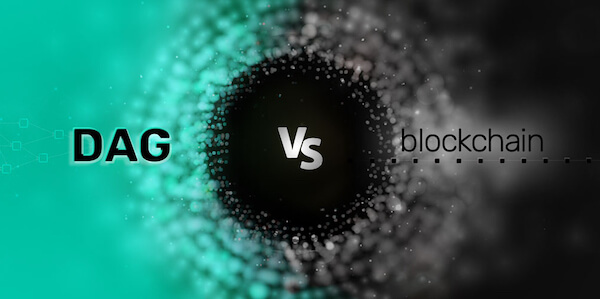Categories: General Information
Understanding DAG vs Blockchain - A Comparative Analysis
In the realm of distributed ledger technologies, two revolutionary concepts have emerged to challenge the conventional blockchain architecture: Directed Acyclic Graphs - DAG vs Blockchain. Both have proven to be robust systems with unique features that address various shortcomings of traditional centralized databases.
In this blog, we'll delve into how DAGs are utilized in distributed ledgers, and then conduct a comprehensive comparison of DAG vs Blockchain based on various crucial aspects.
Table of Contents
How Does a Directed Acyclic Graph (DAG) Operate?

In a blockchain, the process involves nodes or miners validating new blocks and integrating them into the network. Nodes confirm the legitimacy of new transactions by cross-referencing their data with the historical record of previous transactions in the most recent block.
If you are not familiar with what Directed Acyclic Graph (DAG) is, you can refer to this link.
If you envision a blockchain as a linear chain of blocks, a DAG takes on a more intricate appearance resembling a tree, complete with open vertices and connecting branches. In a DAG-based model, each node can have multiple parent roots, which means that numerous new transactions can undergo validation simultaneously. Unlike traditional blockchains, where nodes only reference the last block, nodes in a DAG network can trace back to previous transactions from any node within the network.
Within a directed acyclic graph, interconnected nodes collaborate and reference multiple transactions. This characteristic theoretically fosters scalability and alleviates network congestion.
Similar to conventional blockchains, network validation in DAGs is achieved through consensus algorithms, whereby nodes 'agree' on the network's state. Generally, DAG networks employ the Proof-of-Stake (PoS) consensus mechanism due to its energy-efficient nature.
DAG vs Blockchain
Reaching Consensus
Blockchain systems generally rely on Proof-of-Work (PoW) or Proof-of-Stake (PoS) mechanisms to achieve consensus. PoW requires significant computational power and is vulnerable to 51% attacks, while PoS depends on wealth distribution. In contrast, DAG-based networks use a different approach. Since each transaction confirms multiple previous transactions, consensus is achieved through a more organic and decentralized process. This makes DAG networks more resilient to attacks and quicker in confirming transactions.

Transaction Speed
Blockchain networks often suffer from slower transaction processing times due to block confirmation and the need to resolve conflicts in the chain. DAG networks, on the other hand, can process multiple transactions simultaneously, resulting in faster confirmation times. As the network grows, DAG's transaction speed tends to increase, making it a favorable option for applications that require high throughput.
Transaction Costs
In the blockchain, miners or validators are rewarded for confirming transactions, which often leads to transaction fees for users. In DAG systems, users themselves contribute to the consensus process by approving other transactions, reducing the need for costly mining activities. As a result, DAG-based networks generally have lower transaction costs, making micro-transactions more feasible.
Degree of Decentralization
Blockchain systems strive to achieve decentralization, but the concentration of mining power in large mining pools remains a concern. DAG networks inherently promote decentralization, as every user actively participates in the validation process. This allows for a more evenly distributed consensus mechanism, reducing the risk of centralization.
Scalability

Blockchain technology has faced challenges with scalability as the number of transactions increases, leading to network congestion. DAG's inherent structure allows it to scale more efficiently because transactions can occur concurrently, making it a viable solution for applications with high scalability requirements.
Popularity
Blockchain technology has gained significant traction over the years, primarily due to the rise of cryptocurrencies like Bitcoin and Ethereum. However, DAG technology has been gaining popularity as well, with various projects exploring its potential benefits in different industries. The popularity of DAG networks is likely to continue growing as more use cases are developed and tested.
Energy Use
One of the most notable criticisms of blockchain technology is its high energy consumption, particularly for PoW-based networks. DAG networks, with their more streamlined consensus mechanism, tend to be more energy-efficient. As environmental concerns become more prominent, the lower energy footprint of DAGs could become a significant advantage.
Conclusion
In conclusion, both Directed Acyclic Graphs (DAG) and Blockchain have revolutionized the concept of distributed ledgers, but each offers distinct advantages and disadvantages. DAG networks present a more efficient consensus mechanism, faster transaction speeds, lower costs, increased decentralization, and improved scalability.
Additionally, the reduced energy consumption of DAG networks aligns with the growing environmental consciousness. While blockchain technology continues to dominate the market, DAG's growing popularity and unique features make it a strong contender for the future of distributed ledger systems.
The choice between DAG vs Blockchain depends on the specific use case and the trade-offs that align with the requirements of the application. As the technology evolves, we can expect to witness further innovation and adoption in both these groundbreaking technologies.
Thank you for your interest in our U2U blog. Please follow us to explore the latest information in the market
